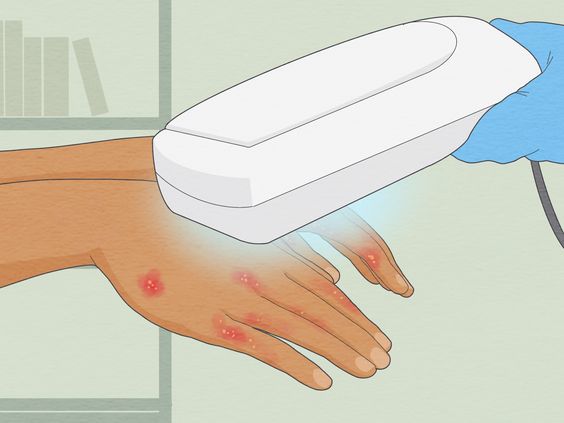Introduction
Dyshidrotic eczema, also known as dyshidrosis, is a common skin condition that causes small, itchy blisters to form on the palms of your hands and soles of your feet. These blisters are usually filled with fluid and can be very uncomfortable. In some cases, the blisters may also spread to the backs of the hands and tops of the feet.

The exact cause of dyshidrotic eczema is unknown, but it is thought to be triggered by a number of factors, including allergies, stress, and exposure to certain metals, such as nickel and cobalt. It is more common in women than men, and often develops in young adulthood.
While there is no cure for dyshidrotic eczema, there are a number of treatments that can help relieve the symptoms and prevent flare-ups.
Symptoms
The most common symptom of dyshidrotic eczema is the formation of small, itchy blisters on the palms of the hands and soles of the feet. These blisters are typically 1-2 millimeters in diameter and are filled with a clear fluid.
Other common symptoms include:
- Redness
- Itching
- Burning
- Scaling
- Pain
- Cracking
Causes
The exact cause of dyshidrotic eczema is unknown. However, there are a number of factors that are thought to trigger the condition, including:
- Allergies: People with dyshidrotic eczema are more likely to have other allergies, such as hay fever, asthma, and food allergies.
- Stress: Stress can trigger or worsen dyshidrotic eczema symptoms.
- Contact with irritants: Exposure to certain metals, such as nickel and cobalt, can trigger dyshidrotic eczema in some people.
- Atopic dermatitis: People with atopic dermatitis, a common type of eczema, are more likely to develop dyshidrotic eczema.
- Hot, humid weather: Dyshidrotic eczema flare-ups are more common in the summer months.
Treatments
There is no cure for dyshidrotic eczema. However, there are a number of treatments that can help relieve the symptoms and prevent flare-ups.
- Topical corticosteroids: These medications help reduce inflammation and itching. They are available in creams, ointments, and lotions.
- Oral antihistamines: These medications can help reduce itching.
- Phototherapy: This treatment involves exposing the skin to ultraviolet light. It can help to reduce inflammation and itching.
- Wet dressings: Applying cool, wet compresses to the affected area can help reduce inflammation and itching.
- Avoiding triggers: If you know what triggers your dyshidrotic eczema, try to avoid contact with those substances.
- Moisturizing: Keeping your skin well-moisturized can help prevent dryness and cracking, which can worsen dyshidrotic eczema symptoms.
Living with Dyshidrotic Eczema
Living with dyshidrotic eczema can be challenging. The condition can be itchy, painful, and embarrassing. You may find that the blisters make it difficult to use your hands or walk.
However, there are a number of things you can do to manage the condition and minimize its impact on your life:
- Follow your treatment plan: Be sure to follow your doctor's recommendations for treatment.
- Identify and avoid triggers: If you can identify your triggers, you can take steps to avoid them.
- Moisturize regularly: Keep your skin well-hydrated.
- Protect your skin: Wear gloves when doing dishes or other activities that involve contact with irritants.
- Manage stress: Stress can worsen dyshidrotic eczema symptoms, so find healthy ways to manage stress, such as exercise, relaxation techniques, or spending time with loved ones.
If you have any concerns about dyshidrotic eczema, talk to your doctor or a dermatologist.

.jpg)